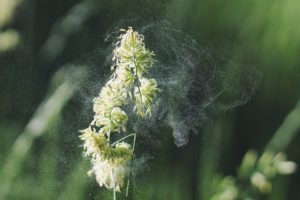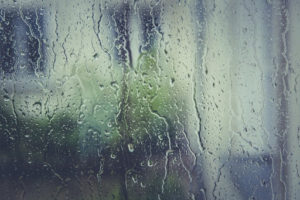Identifying the Most Common Indoor Pollutants
Indoor air quality is a crucial factor when it comes to your and your family’s comfort level at home, but did you know that poor air quality can also affect your general wellbeing? There are many reasons why your indoor air quality may be low, ranging from unclean ducts to poor outdoor air quality, but no matter the reason, these issues result in the same outcome: unwanted particles floating around in the air inside your home. The 4 most common particulate indoor pollutants are pollen, mold, pet dander, and dust.

Pollen
Pollen is produced by many types of plants, and is used as a means of reproduction. To the human eye, pollen is usually seen as a fine dust, often yellow in color. As strange as that sounds, pollen is also an allergen, and reactions to it can range from minor to severe depending on the individual.
Pollen enters into the home through cracks, such as open windows, or doors that are left ajar, but can also be tracked into the home on clothes or shoes. Since the particles are so small, some air filters fail to catch pollen, which heightens it’s probability of getting into the air inside your home. The health risks posed by pollen include:
- Sneezing
- Congestion
- Runny nose
- Red, watery eyes
- Asthma attacks
Mold
Mold is a type of fungus, and can range in color from black, to white, to orange, green, and even purple. Mold grows both indoors and outdoors, practically anywhere that there is excess moisture. In small quantities, mold is not harmful; in fact, we are exposed to it every day. However, when mold begins to grow in an enclosed space, such as inside a home, it can lower the IAQ dramatically, and even cause health issues.
The best way to rid your home, and therefore the air you breathe, of mold, is to take preventative measures. This includes ensuring that there are no leaks anywhere in the structure of the house, and lowering the humidity levels as much as possible. Similarly to pollen, mold exposure health effects can range from minor to severe:
- Stuffy nose
- Wheezing
- Itchy eyes or skin
- Shortness of breath
- Asthma
- Insomnia*
- Confusion or disorientation*
- Memory loss*
- Muscle cramps*
- Light sensitivity*
- Hair loss*
- Numbness in extremities*
*These health issues are more severe as they result from high exposure to toxic molds.
 Pet Dander
Pet Dander
As cute and lovable as your furry (or feathery) friends may be, they might be producing what is known as pet dander, tiny particles of dead skin that result from shedding. Pet dander can also contribute to lowering your indoor air quality. Tackling pet dander begins with frequently washing anything that the dander can grab onto, such as couches, carpets, and pet beds, and bathing your pet weekly.
Pet dander, like pollen and mold, is an allergen. This, in turn, means that the quantity of pet dander required to produce a physical reaction from a human varies greatly by individual. Reactions to pet dander include:
- Congestion
- Sneezing
- Runny nose
- Chest tightness
- Wheezing
- Itchy, watery eyes
- Eczema or rashes
 Dust
Dust
Though the exact composition of dust varies from household to household, it is a combination of many different kinds of particles including fiber, dead skin, hair, dust mites, and textile fibers. In fact, what you think is dust may actually be pollen, mold, or even pet dander!
So how do you get rid of this elusive debris? Regularly cleaning your home, including wiping down surfaces and vacuuming, can dramatically reduce the amount of dust indoors. Since dust is such a tiny particle, breathing too much can have some serious respiratory effects. Health risks of having too large a quantity of dust in the air you breathe include:
- Eye, throat, and skin irritation
- Runny nose
- Itchy, watery eyes
- Cardiovascular problems
- Respiratory problems
Indoor Air Quality Maintenance
Making sure that the air in your home is clean and breathable is the first step to ensuring you and your family’s comfort inside the home. Lucky for you, TemperaturePro’s HVAC experts install the highest rated air filtration and scrubbing systems. To learn more about indoor air quality and how we can help you breathe easy, give your local TemperaturePro a call today! We’re here to help.








 Pet Dander
Pet Dander Dust
Dust

